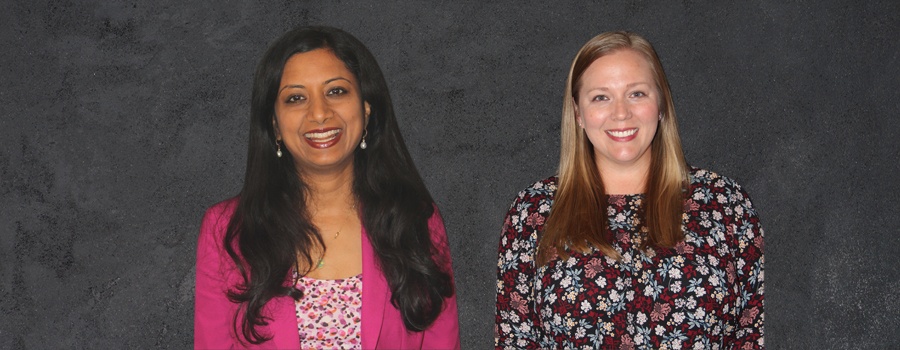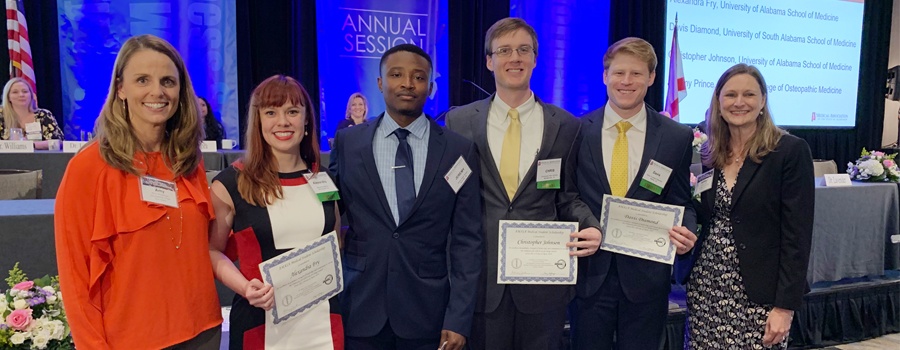Month: April 2019
-

Critical Errors in Inhaler Technique Common in Children with Asthma
In the first study to evaluate inhaler technique in children hospitalized for asthma – the group at highest risk for complications and death from asthma – researchers found that nearly half of participants demonstrated improper inhaler use, which means they routinely were not taking in the full dose of medication. Adolescents most commonly displayed critical…
-

Meet Our New Officers
Aruna Arora, M.D. President-Elect Dr. Arora originally planned to follow her father into medicine as a pediatrician after watching him treat his patients and seeing his dedication to the children and their families. She, too, wanted to make a difference in the daily lives of people. But, when she was in medical school, her fascination…
-

Centreville Physician Named President of the Medical Association
BIRMINGHAM – Long-time Centreville physician, John S. Meigs Jr., M.D., was named president of the Medical Association of the State of Alabama during the Association’s Annual Meeting and Business Session last week. Dr. Meigs also serves on the board for the Alabama Board of Medical Examiners. “The Association welcomes Dr. Meigs’ continued service on the…
-

Four Medical Students Receive Scholarships during 2019 Annual Meeting
BIRMINGHAM – This year four medical students received scholarship awards totaling up to $8,000 during the 2019 Annual Meeting of the Medical Foundation of Alabama. The AMASA Medical Student Scholarship Fund was established in 2012 by the Alliance to the Medical Association of the State of Alabama in partnership with the Medical Foundation of Alabama…
-

Underwood Minority Scholarship Award Announced
MONTGOMERY — The Underwood Minority Scholarship Award was officially announced during the Association’s 2019 Annual Meeting and Business Session. Named for long-time Montgomery physician and the Medical Association’s 152nd President Jefferson Underwood III, M.D., the Underwood Minority Scholarship Award is for African-American individuals underrepresented in Alabama’s medical schools and the state’s physician workforce. Dr. Underwood…
-

Etowah County’s Physicians Who Care with Seth Spotnitz, M.D., and Matt Lovato, M.D.
DECATUR ─ Part of the job of being a physician is to advocate on behalf of the patient. For the physicians in Etowah County who comprise the nonprofit organization known as Physicians Who Care, this isn’t just part of their job…it’s their mission. Physicians Who Care of Northeast Alabama was founded in 1988 as a…
-

Could Employee Engagement be a Cultural Decision?
As the Baby Boomers retire and Millennials join the workforce, managers find themselves with a new challenge in engaging the staff. The baby boomers did not mind following strict rules, nor did they require a daily pat on the back. Most employees need more than just a task list. They need to feel valued, informed…
-

An Update on Alabama’s Certificate of Need Program
Over the past few months, we have seen some changes and movement when it comes to the certificate of need (“CON”) program in the State of Alabama. In February, Emily Marsal was appointed as the new Executive Director of the State Health Planning and Development Agency (“SHPDA”), the state agency overseeing the CON program. Emily comes…
-

Don’t Forget Your Risk Assessments!
Many medical practices are planning their Security Risk Assessments for the new year. Whether to better qualify for the 2019 Merit-based Incentive Payment System (MIPS) or to fulfill obligations to comply with the HIPAA Security Rule, a strong strategy now will reap benefits later. It’s a good time to remember what is required when conducting…